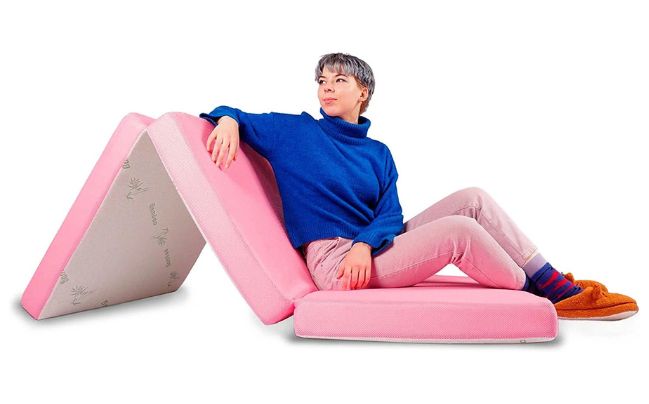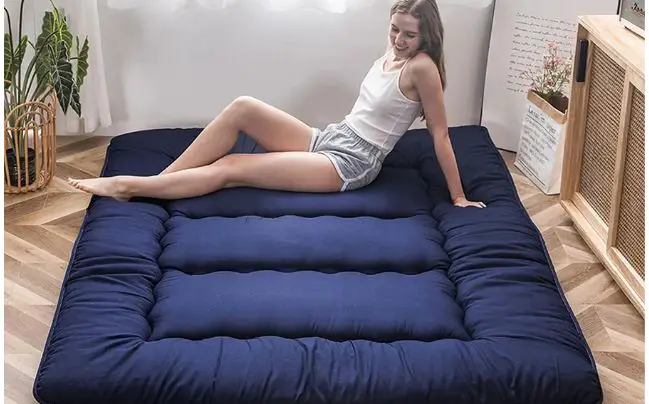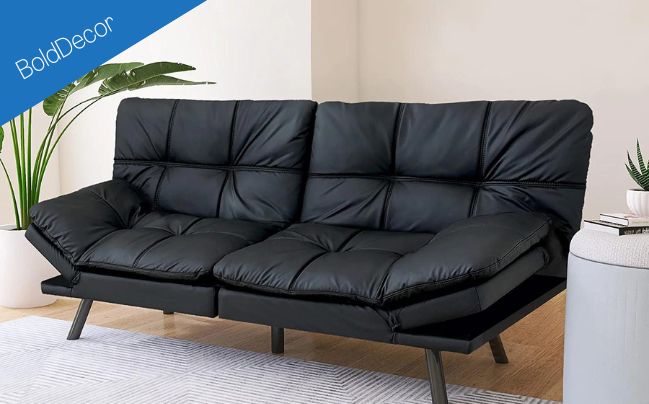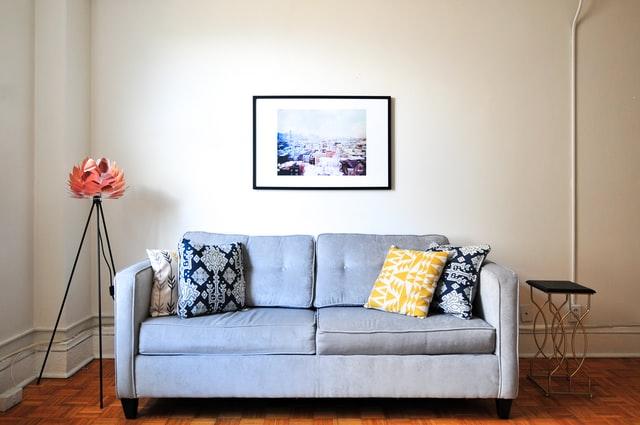Nowadays, futons are becoming increasingly popular. They are seen as a versatile and affordable piece of furniture that can be used in a variety of settings. But one question that still remains is: are futons foldable?
In this blog post, we will investigate the answer to this question. We will also explore the different types of futons and their key features.
Are futons foldable?
Yes, futons are typically foldable. They are designed to be easily converted from a couch to a bed, and back again.
The frame of a futon is usually made of metal or wood, and it has a hinge in the middle that allows the backrest to be folded down to create a flat surface for sleeping.
Some futons also have a foldable footrest, which can be raised or lowered depending on whether you want to use the futon as a couch or a bed. When not in use, futons can be folded up to save space in a room.
More reads:
Best Foldable Futons in 2023
Types of Futons

There are several types of futons, including:
Traditional futon:
This is a type of futon that typically consists of a wooden or metal frame and a mattress made of foam or cotton-wool blend. It can be folded up into a sofa and unfolded into a bed.
Bi-fold futon:
This type of futon has a hinged frame that folds in half, allowing it to be easily converted from a sofa to a bed.
Trifold futon:
This type of futon has a frame that folds into thirds, making it more compact and easier to store when not in use.
Lounger futon:
This is a type of futon that has a reclining backrest, allowing it to be used as a couch or a bed.
Storage futon:
This type of futon has a built-in storage compartment under the seat, which is useful for storing blankets, pillows, and other items.
Click-clack futon:
This type of futon has a mechanism that allows it to be easily converted from a sofa to a bed with a simple “click-clack” motion.
Sofa bed:
This is a type of futon that looks like a traditional sofa but has a hidden bed inside. It can be easily converted from a sofa to a bed with a simple mechanism.
Elements of a Futon
A traditional Japanese futon typically consists of the following elements:
Futon cover:
The cover is made of fabric and is used to protect the futon from dirt and wear.
Futon filling:
The filling is made of cotton, wool, or another material, and it provides the futon with cushioning and support.
Futon frame:
The frame is typically made of wood and is used to hold the futon in place.
Futon legs:
The legs are usually made of wood and support the frame.
While western-style futons and hybrid futons typically have the same elements as traditional Japanese futons, with the addition of a frame that can be converted from a couch to a bed.
The frame is typically made of wood or metal, and it includes a mechanism for converting the futon from a couch to a bed and vice versa. The frame may also include additional features, such as storage drawers or built-in shelving.
Advantages of Futons

Futons have a number of advantages that make them a popular choice for furniture:
Versatility:
Futons can be used as both a couch and a bed, making them a great option for small spaces or for people who need to use their furniture for multiple purposes.
Affordability:
Futons tend to be more affordable than traditional couches or beds, making them a good choice for people on a budget.
Durability:
Futons are generally made of sturdy materials such as wood or metal, so they can withstand regular use and wear and tear.
Ease of movement:
Futons are typically lightweight and easy to move, making them a good option for people who may need to rearrange their furniture frequently.
Customization:
Many futons come with interchangeable covers, so you can easily change the look of your futon to match your decor.
Comfort:
Modern futons are available in a range of styles and can be made with comfortable materials such as memory foam or innerspring mattresses, making them comfortable to sit or sleep on.
Disadvantages of Futons

There are also a number of disadvantages to consider when it comes to futons:
Comfort:
While some modern futons are quite comfortable, others may not be as comfortable as traditional couches or beds. This can be a problem if you plan to use your futon as a primary seating or sleeping surface.
Durability:
While futons are largely durable, they may not be as long-lasting as traditional couches or beds. This can be an issue if you plan to use your futon on a daily basis, or if you have children or pets that may be rough on the furniture.
Size:
Futons may not be as large or spacious as traditional couches or beds, which can be an issue if you have a lot of people over or if you need extra room to stretch out.
Support:
Some futons may not offer as much support as traditional couches or beds, which can be a concern if you have back or neck issues.
Aesthetics:
While futons can be stylish and attractive, they may not have the same level of sophistication as traditional furniture. This can be an issue if you have a more formal decor style.
Cost:
While futons can be more affordable than traditional furniture, high-quality futons can still be quite expensive. This can be an issue if you are on a tight budget.
How to Fold a Futon
To fold a futon, follow these steps:
Begin by removing any pillows or cushions that are on top of the futon.
Locate the backrest of the futon and lower it down so that it is parallel to the seat cushions.
If your futon has a split backrest, lower each half down individually.
Once the backrest is in the down position, push the seat cushions towards the backrest until they meet in the middle.
Grab the front edge of the seat cushions and fold them over the backrest.
If your futon has a split backrest, make sure that each half of the backrest is evenly covered by the seat cushions.
Once the seat cushions are in place, you can put any pillows or cushions back on top of the futon.
To complete the fold, push the futon against a wall or into a storage space until it is fully collapsed.
Note: the process for folding a futon may vary depending on the specific model you have. Some futons may have additional steps or may fold in a slightly different way.
If you are unsure how to fold your futon, you may want to consult the manufacturer’s instructions or seek guidance from a professional
Futon Dimensions
Here are some common dimensions for different types of futons:
Keep in mind that these dimensions may vary slightly depending on the manufacturer and the specific model of futon you are considering.
Thus, it’s always a good idea to measure the space where you plan to place the futon, just to be sure it will fit comfortably.
Bottom line
Futons are foldable furniture that can be used as a sofa during the day and as a bed at night. They are affordable and versatile, making them a popular choice for small spaces.
As mentioned before, there are a variety of futon styles and sizes available, so you can find one that fits your needs.
To help you narrow down your choices, here are a few of Amazon’s top-rated futons from each category.
Traditional futon:





